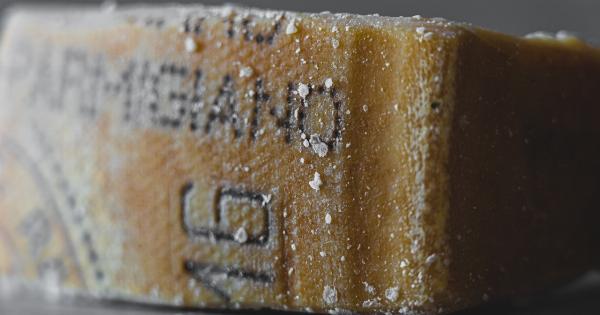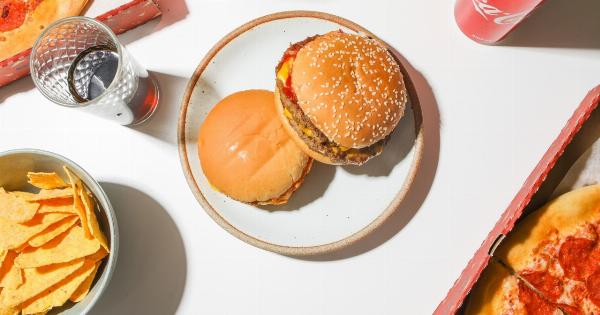Many people are aware that consuming too much sodium can be bad for their health. Excessive sodium intake has been linked to conditions such as high blood pressure, heart disease, and stroke.
While some sodium is necessary for the body to function properly, it is important to be mindful of the foods we eat that contain high amounts of sodium. This article will highlight some common high-sodium foods that you should avoid or consume in moderation.
The Dangers of High-Sodium Diets
Before we delve into specific foods, it is crucial to understand why high-sodium diets can be harmful. Sodium plays a vital role in maintaining the balance of fluids in our bodies.
However, excessive sodium can lead to fluid retention and increased blood volume, which can put strain on the heart and blood vessels.
Individuals with high blood pressure or certain health conditions, such as kidney disease, should be particularly cautious about their sodium intake.
High-sodium diets can also have a negative impact on bone health, as excess sodium can cause the body to excrete calcium, leading to reduced bone density over time.
1. Processed and Cured Meats
Processed and cured meats, such as bacon, sausages, hot dogs, and deli meats, are often high in sodium. These meats go through a curing process that involves adding salt to preserve them.
Just one serving of these meats can contain a significant amount of sodium, so it is wise to limit your consumption.
2. Canned Soups
Canned soups may seem like an easy and convenient meal option, but they are often packed with sodium. Manufacturers add salt to these soups for flavor and as a preservative.
Some canned soups can contain more than half of your recommended daily sodium intake in just one serving. Opt for homemade soups or lower-sodium versions instead.
3. Fast Food
Frequenting fast food establishments can lead to a high-sodium diet. Burgers, fries, and other fast food items are typically loaded with sodium to enhance taste.
These meals are often accompanied by sugary sodas, which can further contribute to health issues. Avoiding fast food or choosing healthier options when eating out can help reduce your sodium intake.
4. Salty Snacks
Chips, pretzels, and other salty snacks may be delicious, but they can be a significant source of sodium. Snack foods are often processed and contain high levels of salt to enhance their flavor and extend shelf life.
Instead of reaching for these snacks, opt for healthier alternatives like nuts, seeds, or air-popped popcorn.
5. Condiments and Sauces
Many condiments and sauces that we commonly use to enhance the taste of our meals are packed with sodium. Ketchup, soy sauce, barbecue sauce, and salad dressings can all have high sodium content.
It’s important to read labels and choose low-sodium versions or make your own healthier alternatives at home.
6. Frozen Meals
Frozen meals are often touted as a quick and easy solution for busy individuals. However, they are typically packed with sodium to improve taste and extend shelf life. These meals can contain a significant portion of your daily sodium allowance.
If you rely on frozen meals, look for options with lower sodium content or consider preparing homemade meals in advance and freezing them.
7. Pickles and Pickled Vegetables
Pickles and pickled vegetables are notorious for their high sodium content. The pickling process involves soaking the vegetables in a salty brine, which results in a tangy and salty flavor.
While pickles can make a delicious addition to a sandwich or burger, they should be consumed in moderation due to their sodium content.
8. Cheese
Cheese is a popular ingredient enjoyed in a variety of dishes. While cheese offers calcium and other essential nutrients, it can also be high in sodium. Some cheeses, such as blue cheese and processed cheese, are particularly sodium-dense.
If you are watching your sodium intake, choose low-sodium or reduced-fat cheese options.
9. Instant Noodles
Instant noodles are a quick and convenient meal option for many people. However, they are often high in sodium. The flavor packets that come with instant noodles contain a significant amount of salt.
Consuming these noodles regularly can contribute to a high-sodium diet. Look for lower-sodium alternatives or try making your own homemade noodle dishes.
10. Breads and Pastries
While bread and pastries may not seem like culprits for high sodium content, many commercially produced varieties contain added salt. Additionally, certain baked goods like bagels and pretzels tend to be saltier than others.
Check food labels and opt for whole-grain bread and low-sodium options when possible.
Conclusion
Reducing your intake of high-sodium foods is an important step towards maintaining a healthy diet. By being mindful of the foods listed above and making smarter choices, you can lower your sodium intake and reduce the associated health risks.
Remember to read food labels, opt for fresh and homemade options whenever possible, and flavor your meals with herbs and spices rather than relying on excessive salt.































